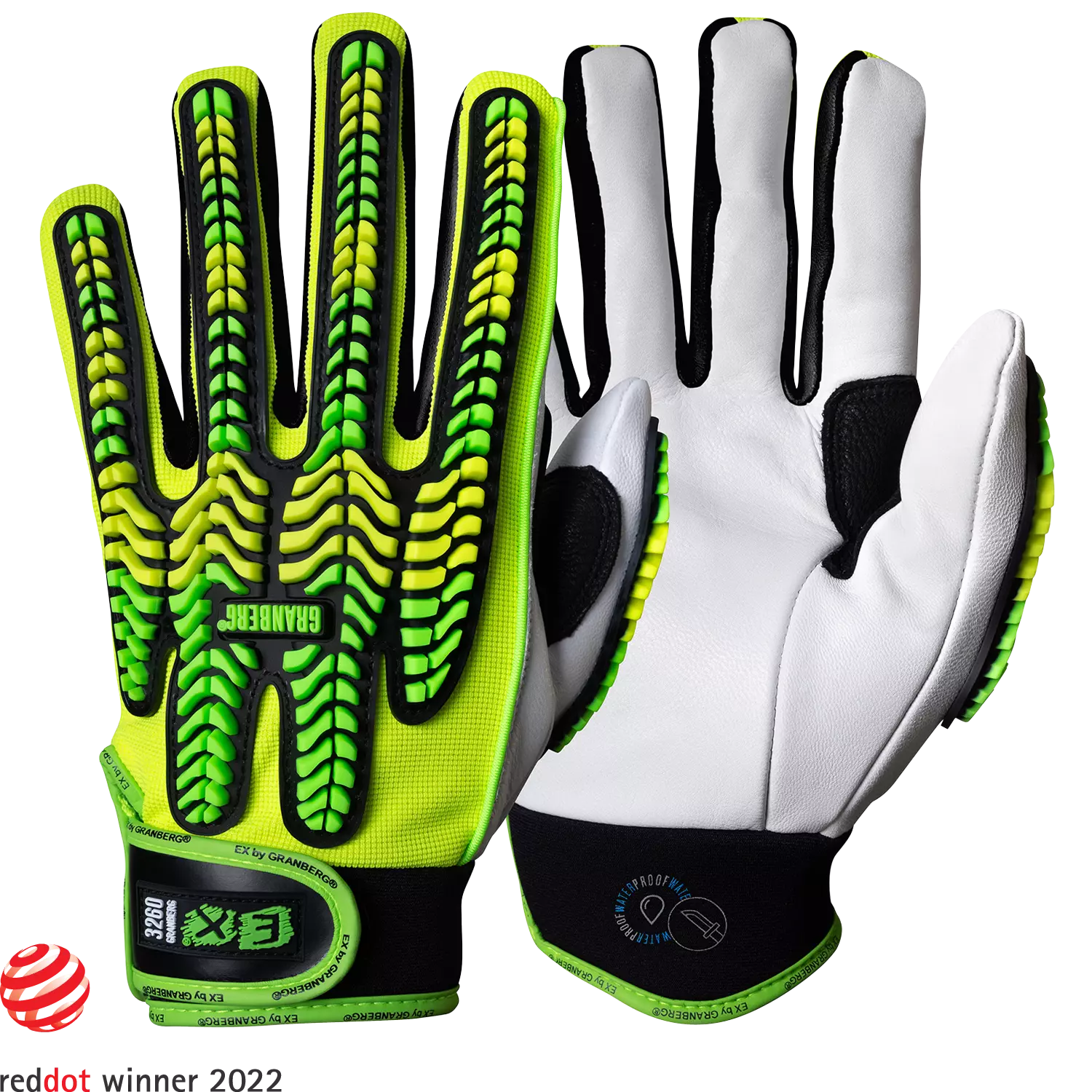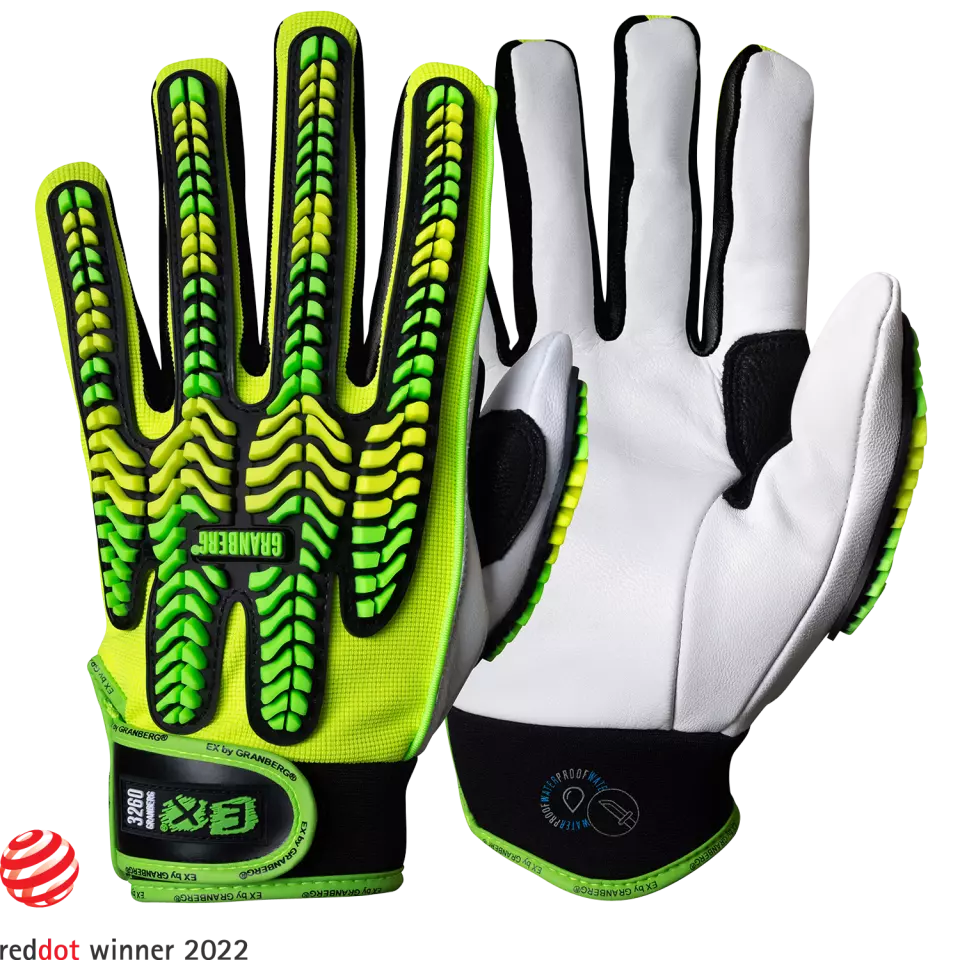
Features You'll Love

Cuff Style · Hook And Loop
Determines how the glove secures around the wrist, affecting fit, comfort, and protection coverage at the wrist area.
Granberg
EX® Cut-, Impact- and Water-Resistant Gloves, Green/White, 6 pairs
EX® Cut-, Impact- and Water-Resistant Gloves, Green/White, 6 pairs
4.8 / 5
139,73 €
Price per 6 pairs
23,29 € / pair
Choose size
Free delivery
Features You'll Love

Cuff Style · Hook And Loop
Determines how the glove secures around the wrist, affecting fit, comfort, and protection coverage at the wrist area.
Product description
These professional safety gloves combine superior cut protection with impact resistance and waterproof capabilities, featuring a cut level D rating according to EN 388:2016 standards. The full goatskin palm construction ensures excellent durability and grip performance in both wet and dry conditions, while the innovative PROTEX™ membrane technology provides waterproof protection without compromising breathability. The ergonomic design incorporates TPR impact protection on the back of the hand, offering comprehensive protection for demanding work environments.
Product Features:
- High cut protection in palm and fingers (Level D)
- TPR impact protection on back of hand
- Full goatskin palm construction
- Waterproof and breathable PROTEX™ membrane
- Spandex back material for flexibility and breathability
- Adjustable hook and loop closure
- Thin polyester mesh liner for comfort
Technical Details:
- Leather thickness: 0.7-0.9 mm
- Palm material: 100% Goatskin
- Back material: Polyester/Spandex
- Liner: Polyester/PROTEX® membrane
- Cut-resistant liner in palm and fingers
- Grip type: Dry and wet conditions
Protection Ratings:
- Abrasion resistance: Level 2
- Tear resistance: Level 3
- Puncture resistance: Level 2
- Cut resistance: Level D
- ANSI Cut: A3
- ANSI Impact: Level 2
Standards:
- CE Category II
- EN ISO 21420:2020
- UKCA certified
Recommended Applications:
- Work involving cut and impact risks
- Wet weather conditions
- Applications requiring precise handling